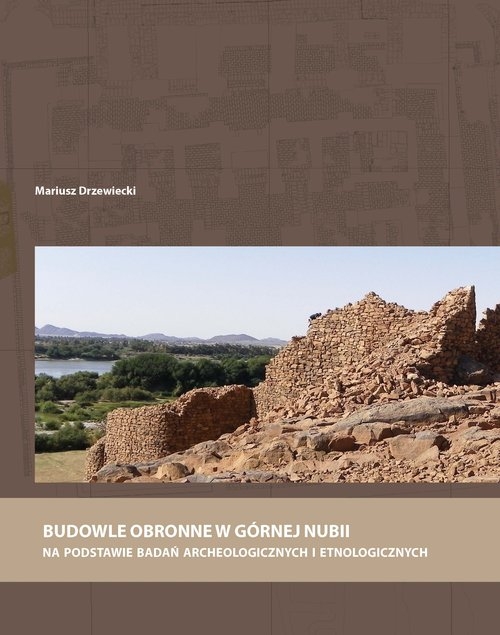Budowle obronne w Górnej Nubii na podstawie badań archeologicznych i etnologicznych
Wydawnictwo Uniwersytetu Warszawskiego

Od prostych wież mieszkalnych, które służyły jednej rodzinie czy niewielkiej grupie, do dużych założeń obronnych z bastionami i bastejami, strzegących granic imperiów i szlaków handlowych. Od nieinwazyjnych metod badawczych, jak fotografia, analiza zobrazowań satelitarnych czy skaning laserowy, po badania powierzchniowe i wykopaliska archeologiczne.
Książka ta przybliża fascynujący świat niezwykle zróżnicowanych budowli obronnych wznoszonych przez wiele stuleci w rejonie Górnej Nubii (dzisiejszy północny i centralny Sudan). Można ją też jednak czytać jako swoisty „przewodnik po archeologii”. Prowadzona w swobodnym stylu narracja wciąga czytelnika w codzienność archeologów, pokazuje, w jaki sposób przygotowują się do prowadzenia badań, z jakimi problemami muszą się mierzyć w ich trakcie, stawia też nowe pytania badawcze i zachęca do własnych poszukiwań.
Fortresses of Upper Nubia in the light of archaeological and ethnological researches
From simple tower houses for one family or a small group of people, to huge defensive complexes with bastions and bastiles guarding the borders of empires and the trade routes. From non-invasive archaeological methods such as photography, analysys of the satellite imagery or laser scanning, to surveys and excavations.
The book presents the fascinating world of very diversified fortresses that were built over many centuries in the Upper Nubia region (today’s northern and central Sudan). However, it can be also read as a kind of „guide on archaeology”. Its informal narrative involves the reader into the every-day reality of the archaeologists, shows how they prepare for the research, and what kind of the problems they have to face during their work. The book also raises some new research questions and encourages the readers to start their own adventure with archaeology.
Książka ta przybliża fascynujący świat niezwykle zróżnicowanych budowli obronnych wznoszonych przez wiele stuleci w rejonie Górnej Nubii (dzisiejszy północny i centralny Sudan). Można ją też jednak czytać jako swoisty „przewodnik po archeologii”. Prowadzona w swobodnym stylu narracja wciąga czytelnika w codzienność archeologów, pokazuje, w jaki sposób przygotowują się do prowadzenia badań, z jakimi problemami muszą się mierzyć w ich trakcie, stawia też nowe pytania badawcze i zachęca do własnych poszukiwań.
Fortresses of Upper Nubia in the light of archaeological and ethnological researches
From simple tower houses for one family or a small group of people, to huge defensive complexes with bastions and bastiles guarding the borders of empires and the trade routes. From non-invasive archaeological methods such as photography, analysys of the satellite imagery or laser scanning, to surveys and excavations.
The book presents the fascinating world of very diversified fortresses that were built over many centuries in the Upper Nubia region (today’s northern and central Sudan). However, it can be also read as a kind of „guide on archaeology”. Its informal narrative involves the reader into the every-day reality of the archaeologists, shows how they prepare for the research, and what kind of the problems they have to face during their work. The book also raises some new research questions and encourages the readers to start their own adventure with archaeology.
Producent:
Uniwersytet Warszawski
Krakowskie Przedmieście 26/28
00-927 Warszawa (PL)
tel: 22 55 21 888
email: [email protected]
Szczegóły
Tytuł: Budowle obronne w Górnej Nubii na podstawie badań archeologicznych i etnologicznychAutor: Mariusz Drzewiecki
Wydawnictwo: Wydawnictwo Uniwersytetu Warszawskiego
ISBN: 9788323546726
Języki: polski
Rok wydania: 2021
Ilość stron: 228
Format: 16,5 cm x 21,00 cm
Oprawa: Miękka

